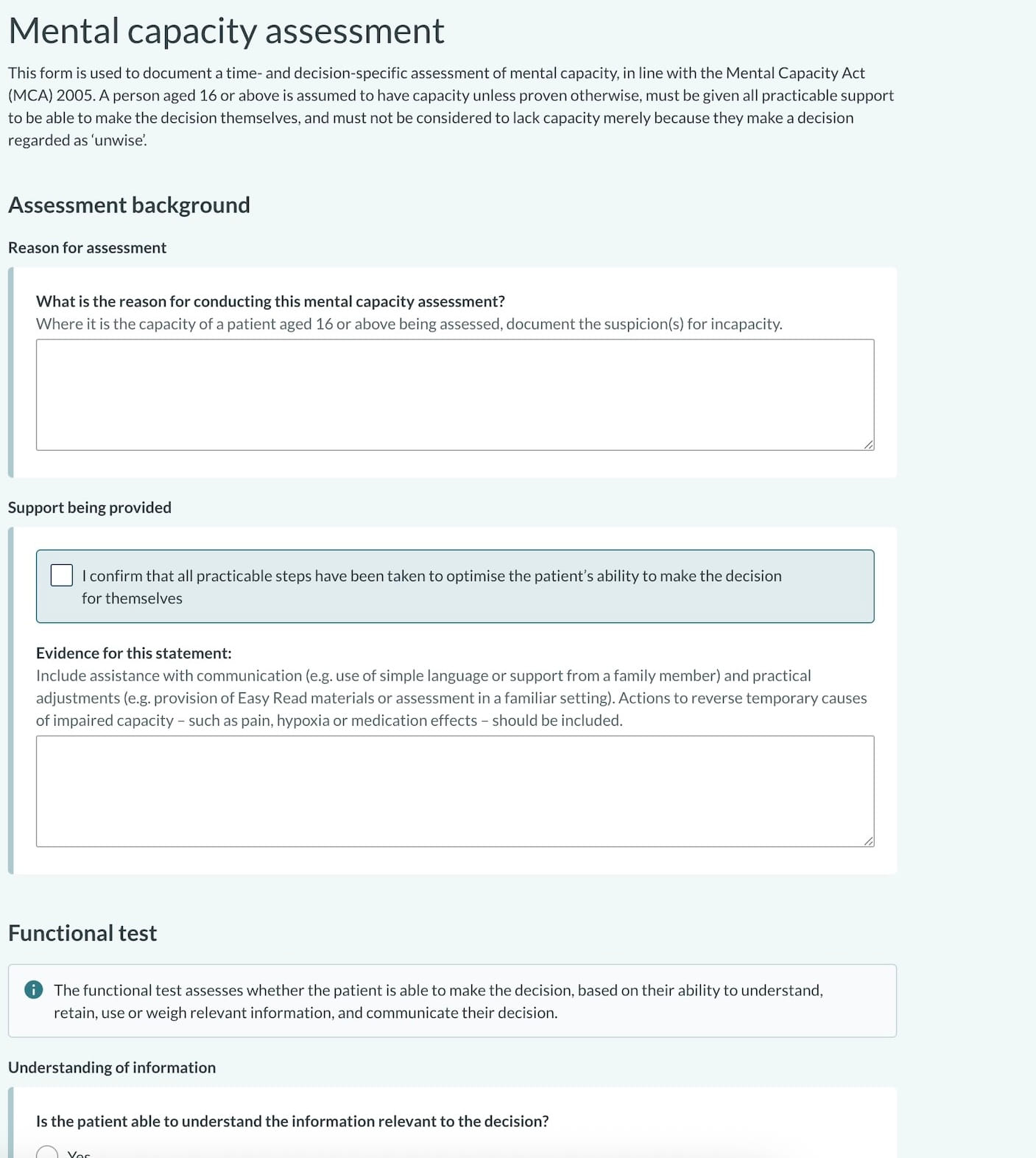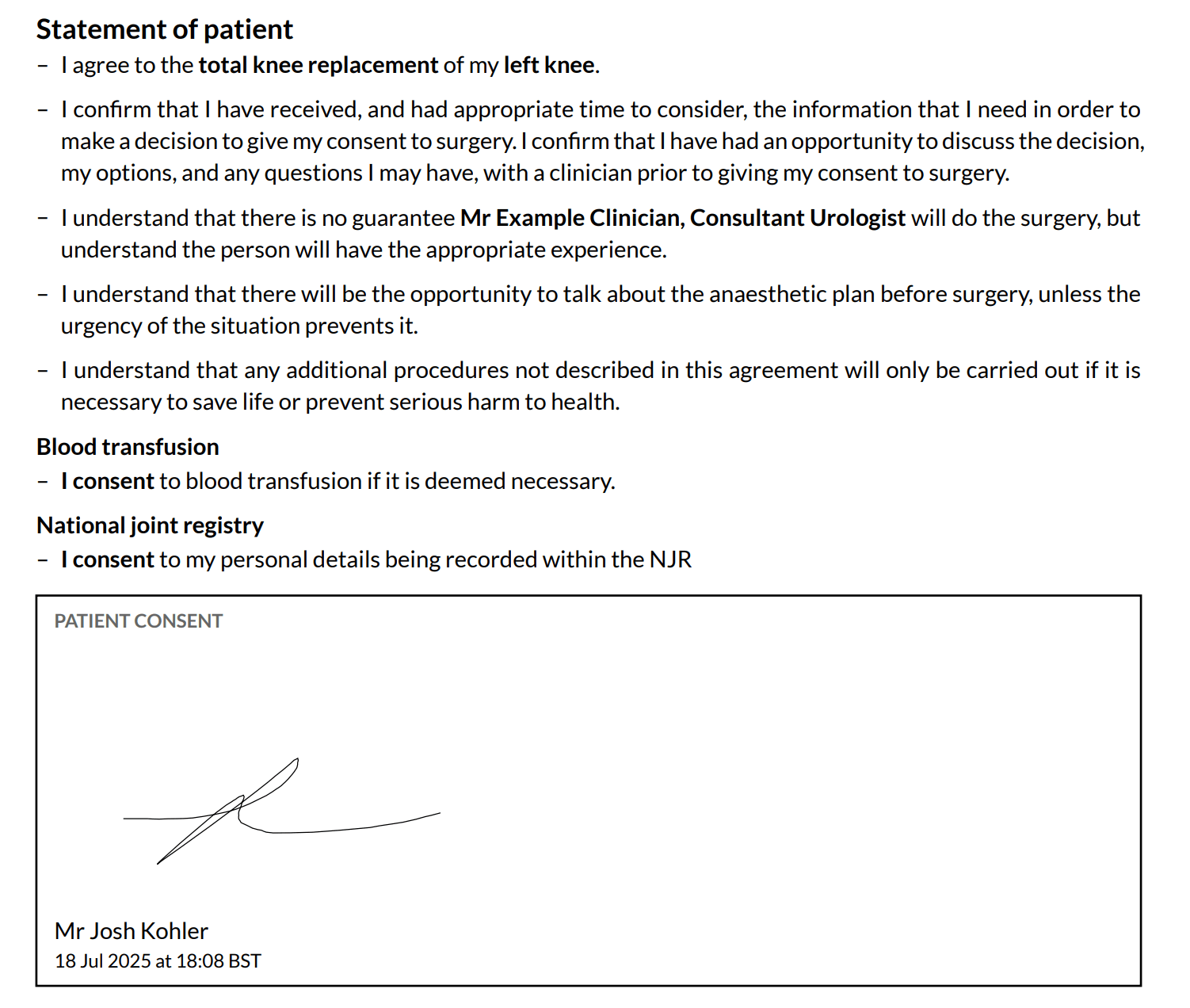Updated mental capacity assessment form
This release introduces an updated mental capacity assessment form, aligned with the draft update to the Mental Capacity Act (MCA) Code of Practice. Although still in draft, key principles are unlikely to change given supporting legal precedent.
A recent Supreme Court ruling clarified that the functional test must precede the diagnostic test. The diagnostic test should then confirm whether an identified functional issue is due to an impairment or disturbance in the functioning of the mind or brain.
Reflecting this, the revised assessment flow now includes:
Background and support: outlining why the assessment is being conducted and what support is being provided.
Functional test: assessing the patient’s ability to understand, retain, weigh, and communicate the decision.
Diagnostic test: completed only if the functional test reveals an impairment.
Conclusion: a summary statement on whether the patient can make the decision.
To strengthen accountability and clinical governance, free-text fields are now required for each section, a change informed by feedback from legal and safeguarding teams across deploying organisations.

Streamlined additional consent content in PDFs
Additional consents – such as for blood transfusions or national registries – often include detailed explanatory text for patients, covering data use and common questions. While essential during the consent process, including this in the consent summary PDF created unnecessary distraction for theatre teams, who primarily need to confirm whether consent has been given. The PDF now focuses on the consent decisions themselves, with full details still available in the Concentric application.

Improved login support signposting for clinicians
Login methods vary between healthcare organisations, and it’s common for newly arrived clinicians to find they don’t yet have a Concentric account. When trying to log in, they may be presented with a message asking them to contact an administrator, but without clarity on who that is or how to reach them. We now direct clinicians to an organisation-specific page that explains the correct login route and provides local support contact details, helping them get access more smoothly.

Increased common treatments from 3 to 5
In release 45 (2022), we introduced the ‘Your common treatments’ section on the procedure search page, showing each user’s top 3 most-used templates. Based on clinician feedback, we’ve increased this to 5, offering quicker access to frequently used treatments.
Looking ahead, we plan to enhance this section, taking into account the recency of use and dynamically adjusting the number of templates shown based on individual usage patterns.